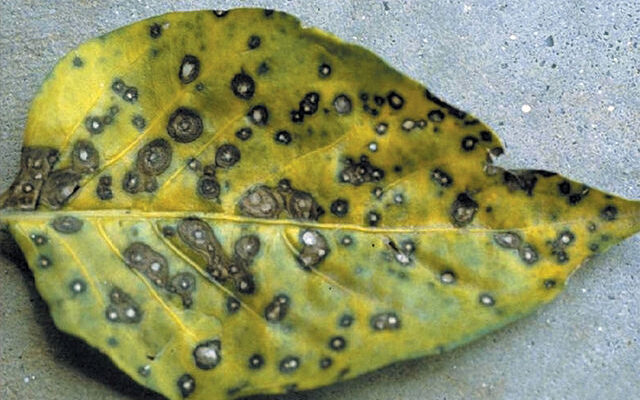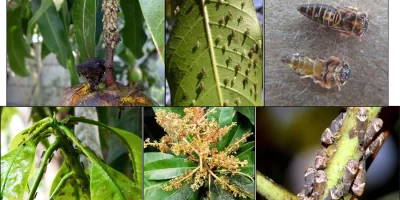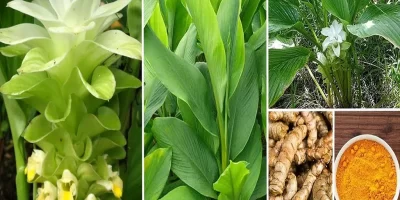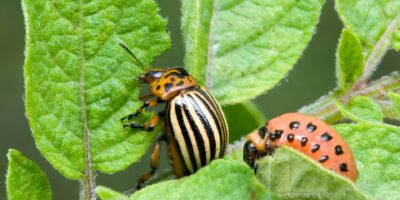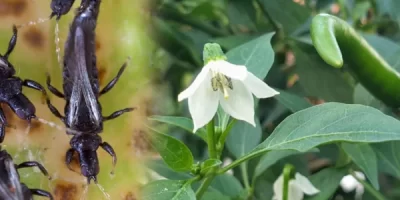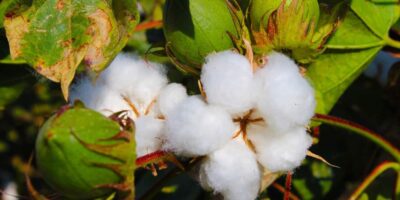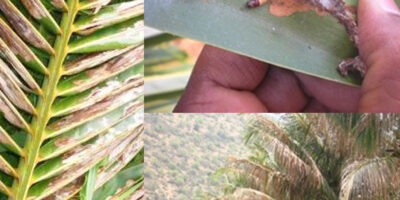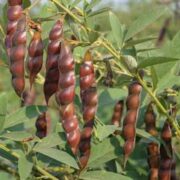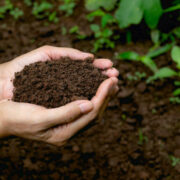Betelvine Insect Pests: Betel with its high export potential has fast emerging as an important cash crop. In India, it is known as ‘pan’. Betel vine is a perennial, dioecious, evergreen climber that is grown in tropics and subtropics for its leaves that are used as a chewing stimulant. The most important pests affecting the crop are Shoot Bug, Scale Insects, White Flies, Mealy Bug, Thrips and Aphids
1. Shoot Bugs (Dispunctus politus): Adults light brown to reddish brown, single egg is laid in tender plant parts. Nymphs hatch out in 8-16 days. Both nymph and adults are sap feeder. Infested leaves faded, become waxy and appear watery in appearance and the blotches ultimately dry up whole leaf. Peak attack time is June to October. Collect and destroy the infested plant parts. Removal of weeds and alternate host plants like hibiscus, bhendi, custard apple, guava etc. in and nearby vineyards throughout the year. Deep ploughing in summer or raking of soil in vineyards helps to destroy its nymphal stages and minimizing the incidence. Detrash the crop on 150 and 210 DAP. Release exotic predator, Cryptolaemus montrouzieri @ 5 per infested plant.
2. White fly (Aleurocanthus rugosa): Adults are soft-bodied, moth-like fly, yellowish dusted with white waxy powder and 1.0- 1.5 mm in length. The wings are covered with powdery wax and the body is light yellow in color. Both adults and nymphs suck plant sap and reduce vigor of the plant. When the population is high, they secrete large quantities of honeydew, which favors the growth of sooty mold. Field sanitation and rogueing of alternate hosts. A regularly maintained program of hedging and topping can help to overcome the whitefly infestation.
3. Red Spider Mite (Tetranychus sp.): Adults are small soft bodied found in colonies in tender parts. Damage is caused by both nymphs and adults by sucking cell sap. Black sooty molds develop on honey dew secreted by aphids on leaves. Dry condition favours population flair up. Planting should be done timely and adopt proper spacing, irrigation and fertilizer management. Avoid application of high nitrogenous fertilizer.
Also Read: Determination of Soil test for soil health.!
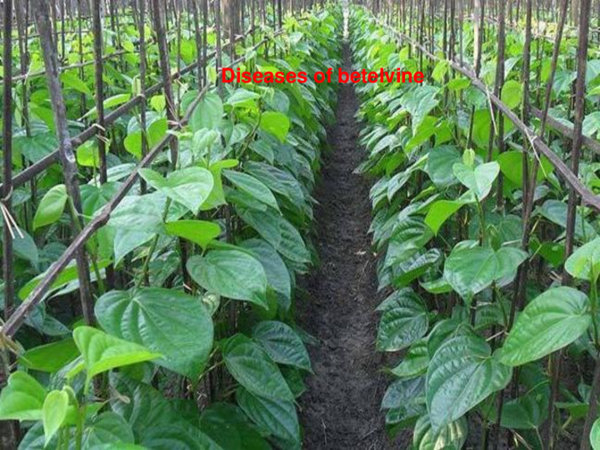
Betelvine Insect Pests
4. Scale Insects (Lepidosaphes cornutus): Adults are tiny, boat shaped, gnat like insects. Eggs laid beneath waxy covering. Newly hatched crawlers attach to succulent parts of leaves, petioles and main veins. Females lose their appendages after first molt and do not pupate. Males pupate and become adults without mouth parts. Affected parts look warty, crinkled and dry up. Vines look sickly. Initiate control measures during early stages of pest infestation. Select scale free seed vines. In nurseries spraying neem oil 0.3 per cent or fish oil rosin 3.0 per cent is also effective in controlling the pest infestation.
5. Aphid (Aphis gossypii): Wingless female have ovoid body in various shades of green, with legs and antennae in yellow, siphunculi wide at base and black in color. Winged females have fusiform body. Nymphs have a variety of body color. These are true bugs and suck up plant sap. Reflective mulches such as silver colored plastic can deter aphids from feeding on plants.
6. Thrips (Thrips tabaci): Adults are slender, 1.5 mm, yellow to brown body, antennae seven segmented. Wings are heavily fringed which are shorter at the base, growing broader towards the distal ends. Young resembles the adult. Both nymph and adult suck sap from tender plant parts. Readily fly away when disturbed. The recommendation on shade management, if adopted, will help to prevent the excessive built up of thrips and mites. Regular field assessment can reduce the pest infestation drastically.
7. Mealy Bugs (Ferrisia virgate): Adult females are oval, greyish yellow with 2 longitudinal sub-median dark stripes on the dorsum which is further crisscrossed with many waxy, glassy lines. Females have enlarged dorsal ducts each with orifice surrounded by a sclerotized area. Removal of weeds and alternate host plants like hibiscus, bhendi, custard apple, guava etc. in and nearby vineyards throughout the year. Deep ploughing in summer or raking of soil in vineyards helps to destroy its nymphal stages and minimizing the incidence.
Also Read: Pest Control Management Practices

